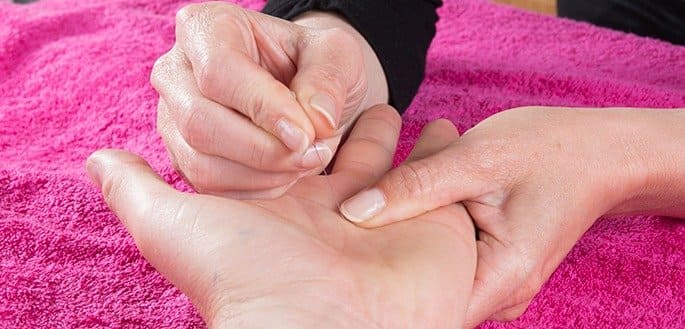
Although the very first documented occurrence of carpal tunnel syndrome dates back to 1854 when median nerve compression in the carpal tunnel was reported, it was not until 1953 that carpal tunnel syndrome (CTS) was first termed.
It is estimated that as many as 1.4% to 14.4% of the population suffer with this condition. Ranking among the highest for days lost from employment-related injuries, CTS remains an unwelcome and painful disruption in too many lives.
Certain types of repetitive motion, from poor computer ergonomics or assembly-line work to arthritis, have been held responsible for CTS. It is believed that those predisposed congenitally suffer from CTS. It is caused by a pinched nerve, and pressure on the median nerve in the wrist which causes stinging, lack of feeling and pain. The median nerve, as well as several tendons, travel from the forearm to the hand through a small area in the wrist called the carpal tunnel. Sensation and motion of the thumb, and 2 adjacent fingers are governed by this nerve.
Carpal tunnel syndrome is a progressive disease that often starts with tingling and weakness but progresses, sometimes to the point where the ability to grip becomes severely diminished, and forming a fist grows impossible.
Western medicine has multiple treatment options available to patients with CTS and this includes surgery, anti-inflammatory cortisone injections, non-steroidal anti-inflammatory medications, referred to as NSAIDs, and forms of physical therapy, often to stretch and strengthen the area once there has been an initial improvement. The use of a wrist splint is also applied to control motion. One treatment option that stands out, and stands the test of time, is acupuncture.
Acupuncture, a part of Traditional Chinese Medicine, referenced as TCM, has been practiced successfully for many thousand years and only recently, as of the latter portion of the 20th century, has Western Europe and North America had the opportunity to learn and employ its methods.
At the heart of acupuncture for carpal tunnel, and all treatments, lies the need to restore balance to the body, as between yin and yang. Placing very fine sterile needles under the skin in predefined points, along meridians, can restore balance. Meridians are the naturally occurring pathways along which the body’s energy passes. A combination of herbal treatment, acupuncture, exercise and massage may be recommended as a complete TCM therapeutic approach.
Treating the root cause of the problem, as opposed to just the symptoms, reveals a significant difference between TCM and Western medicine. CTS may be caused by rheumatoid arthritis, obesity, thyroid problems, diabetes or hormonal changes during pregnancy. Whatever the root cause, addressing the malady will restore balance.
Acupuncture treatment views CTS as dormant Qi and blood in the pericardium (PC) meridian, defined as an interruption in the circulation of blood, and the Qi, around the wrist. (Qi or Chi is the body’s vital energy, sometimes called life force.)
CTS causes the soft tissue to swell which can cause inflammation and infection of the carpal tunnel. Although each acupuncturist develops a distinct treatment plan for each patient, there are similarities in treatments. Acupuncture for carpal tunnel has been performed by some needling the following meridian points: PC 4, SI 6, LU 6, LI 4, LI 9.
PC = Pericardium Meridian. The PC 4 acu-point is the 4th point on the pericardium meridian addressing wrist joint pain located on the fingers with painful joint conditions; PC4 is located on the inside of the forearm near the crease of the wrist, between the 2 tendons.
SI = Small Intestine Meridian: SI 6 clears and removes obstruction from channels & relaxes tendons. It is found on the outside side of the wrist. It is used to relieve acute pain and inflammation.
LU = Lung Meridian: LU 6 is located midway between wrist and elbow and addresses arm spasms and pain and circulation stoppage problems. LU 8 is just above the wrist.
LI = Large Intestine Meridian: LI 4 is located between the thumb and forefinger on the hand. LI 9 addresses weakness in the arms and is located just below the elbow.
The initial acupuncture treatment has most often provided relief to patients. Studies have found reductions in swelling and the body’s production of the hormone cortisol, known to reduce inflammation. Repeated acupuncture treatment is needed in order to ensure proper circulation and nerve conduction on the arm.
Dr. Lev Kalika is a world-recognized expert in musculoskeletal medicine. with 20+ years of clinical experience in diagnostic musculoskeletal ultrasonography, rehabilitative sports medicine and conservative orthopedics. In addition to operating his clinical practice in Manhattan, he regularly publishes peer-reviewed research on ultrasound-guided therapies and procedures. He serves as a peer reviewer for Springer Nature.
Dr. Kalika is an esteemed member of multiple professional organizations, including: